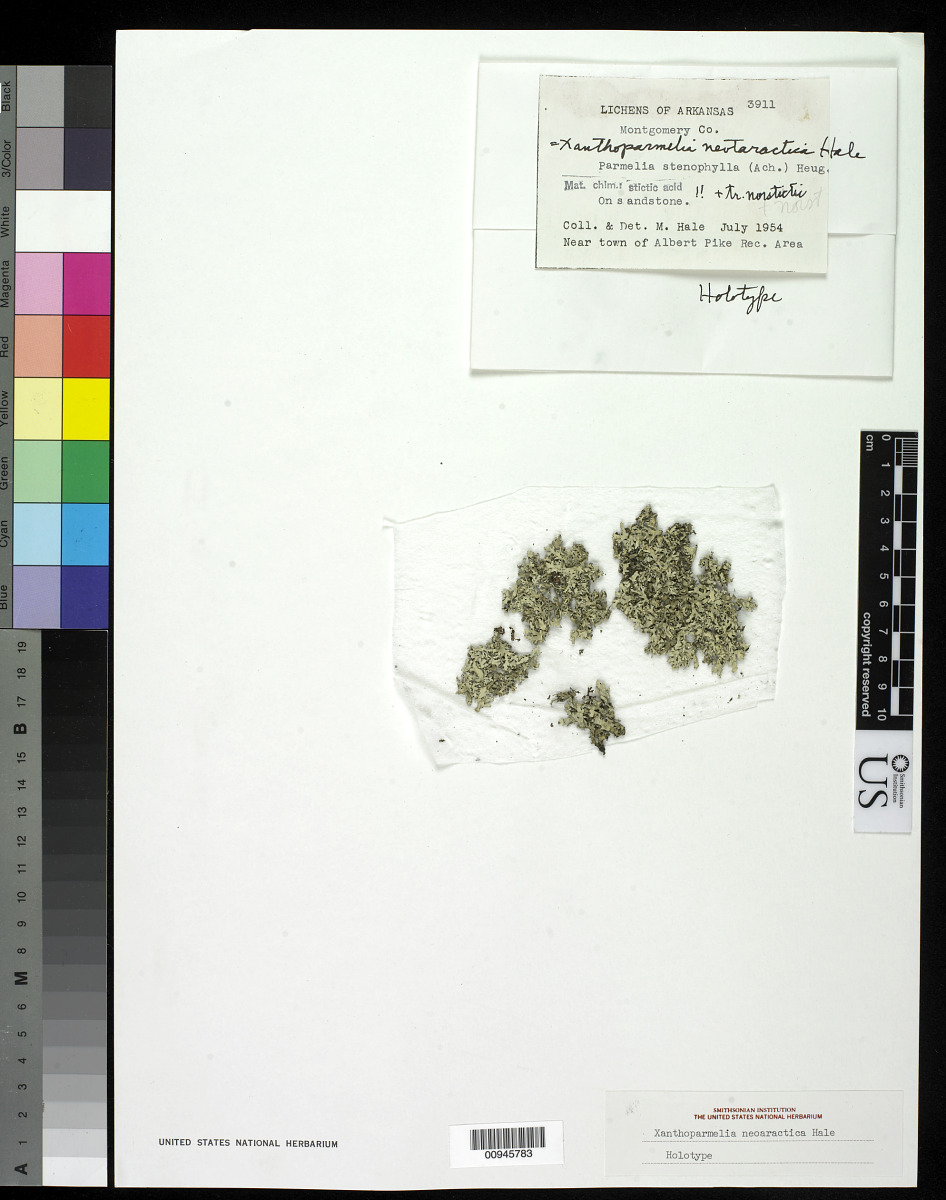
Consortium of Lichen Herbaria
- building a Global Consortium of Bryophytes and Lichens as keystones of cryptobiotic communities -
- Home
- Search
- Images
- Species Checklists
- US States: O-Z >
- US National Parks
- Central America
- South America
- US National Parks
- Southern Subpolar Region
|
|
|
|
Family: Parmeliaceae
|
Nash, T.H., Ryan, B.D., Gries, C., Bungartz, F., (eds.) 2004. Lichen Flora of the Greater Sonoran Desert Region. Vol 2. Thallus: foliose, loosely adnate, 4-8 cm in diam., irregularly divaricately lobate lobes: sublinear, elongate, plane to subconvex, becoming weakly convoluted, 1-1.5 mm wide, often extensively imbricate, lobulate lobulae: sublinear, often over 0.7 mm long, 0.5-1 mm wide, plane; apices: subrotund to subtruncate, smooth to crenate, eciliate upper surface: yellow-green, smooth, dull, epruinose, +faintly maculate lobe tips, without soralia, isidia, or pustulae medulla: white, with continuous algal layer lower surface: pale brown to brown, plane, shiny, sparsely to moderately rhizinate; rhizines: brown, simple, concolorous with lower cortex, 0.3-0.6 mm long Apothecia: common, substipitate, 1-3 mm wide, laminal on thallus, with a smooth margin; disc: dark brown, concave initially but becoming plane, epruinose asci: clavate, 8-spored ascospores: hyaline, simple, ellipsoid, 8-9 x 5-6 µm Pycnidia: not observed Spot tests: upper cortex K-, C-, KC-, P-; medulla K+ yellow becoming dark orange, C-, KC-, P+ red Secondary metabolites: upper cortex with usnic acid (major); medulla with stictic acid (major), norstictic, constictic, menegazziaic and cryptostictic acids (minor or trace). Substrate and ecology: on soil, often in open, arid habitats, in coastal habitats in the Sonoran region World distribution: North and South America Sonoran distribution: occasionally at lower elevations in southern California. Notes: Morphologically X. neotaractica is similar to what was previously called X. taractica (but now treated as X. coloradoënsis) in North America, but it differs in having the stictic acid complex instead of salazinic acid. Hale (1990) reported X. neotaractica only from southeastern U.S.A., but we have now found it as far as central Mexico and southern California. |
Powered by Symbiota










